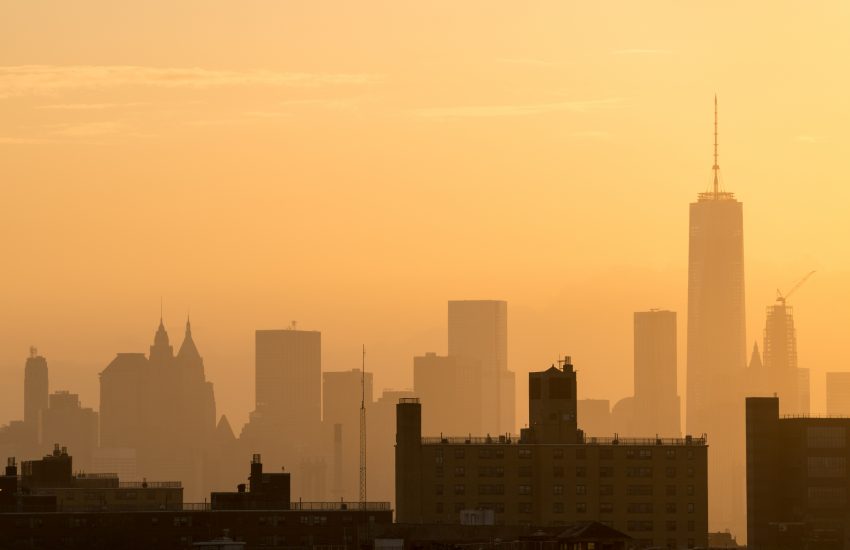In the fall of 2020, when New Yorkers saw photos and videos of orange skies over San Francisco caused by the Bay Area’s infamous fog, combined with heavy smoke from what seemed like non-stop wildfires raging throughout California, it looked like a dystopian movie landscape, or even another planet. Even more surreal, Californians in these vivid images were often wearing masks — not necessarily as protection against the smoky skies, but, rather, as protection from a global pandemic. With time, however, the memory of those unnatural skies and contagion-battling masks faded, especially for those on the East Coast unaccustomed to being confronted with the effects of wildfires.
Nearly three years later, however, when New Yorkers woke up one morning early last month, that ghoulish orange sky was back, but this time it was right outside their windows as smoke emanated from over 400 fires ripping through Eastern Canada. On June 7, a day in which the city particularly smelled of barbecue that lingered for weeks, LaGuardia Airport grounded all flights and New Yorkers were directed by local government to stay indoors, if possible, as the air was hazardous to breathe — air so bad, in fact, that New York City measured the worst air quality in the entire world that day. Over the course of June, the toxic smoke made its way down the East Coast. As if the crimson dystopia outside were not ominous enough, the city was also experiencing a significant uptake in COVID cases, as demonstrated by the city’s wastewater throughout June. Haunting images of masked New Yorkers foregrounding their orange iconic skyline echoed those of the mask-wearing San Franciscans foregrounding their crimson hilly streets just a few years before.
With perpetually rising temperatures across the globe, rapidly expanding deforestation on every continent, and glaciers melting at ever-faster rates into the sea, orange skies and zoonotic pandemics are similarly likely to increase, but in frequency. With this new reality in mind, New York City officials introduced last week two bills already in the works for about a year that, if adopted, would require New York City to measure, report, and enforce air-quality standards inside public buildings such as schools and municipal offices. This data will be publicly accessible. Local officials will have 18 months to draft and refine the standards, which will augment and provide much more detail than current city health and building codes.
In the private realm, two other bills would create five-year pilot programs with the goal of evaluating air quality in certain residential and commercial buildings. Whereas the programs will be mandatory for owners and developers to implement if they receive financial assistance from the City, the programs will be voluntary for other private building owners. If the pilot programs prove successful, local officials will make recommendations for a permanent framework to regulate air quality in private buildings.
The bills’ proponents, City Council member Keith Powers and Manhattan Borough President Mark Levine, explained how they broadened the aims of the bills, initially inspired by COVID-19, an airborne virus that forced Americans to confront the need to improve indoor air quality, including by impeding the spread of viruses and bacteria. Indeed, proposals in the bills are in alignment with new ventilation guidelines disclosed by the U.S. Centers for Disease Control and Prevention just this past May. New York City’s bills’ proposed ventilation guidelines are particularly notable since public schools and municipal buildings across the country largely failed to take meaningful steps to improve HVAC ventilation and HEPA filtration systems, even after a historic respiratory pandemic.
Although it is not yet clear exactly what implementation of the new air quality standards will cost New Yorkers and the city, the bills’ drafters argue that the great benefits to public health will easily outweigh material costs. Exhausted by years of a life-altering respiratory pandemic, New Yorkers currently undergoing a return of the mesquite-scented smoke and sherbet skies resulting from our Canadian neighbors’ insatiable fires, may be the most receptive they’ve ever been to such regulations. And, maybe, the bills’ drafters hope, New York’s actions can serve as a model for the rest of the country, spurring similarly bills in other cities and states, which, as California has known for some time, can no longer assume the sky will be blue when they wake up in the morning.

